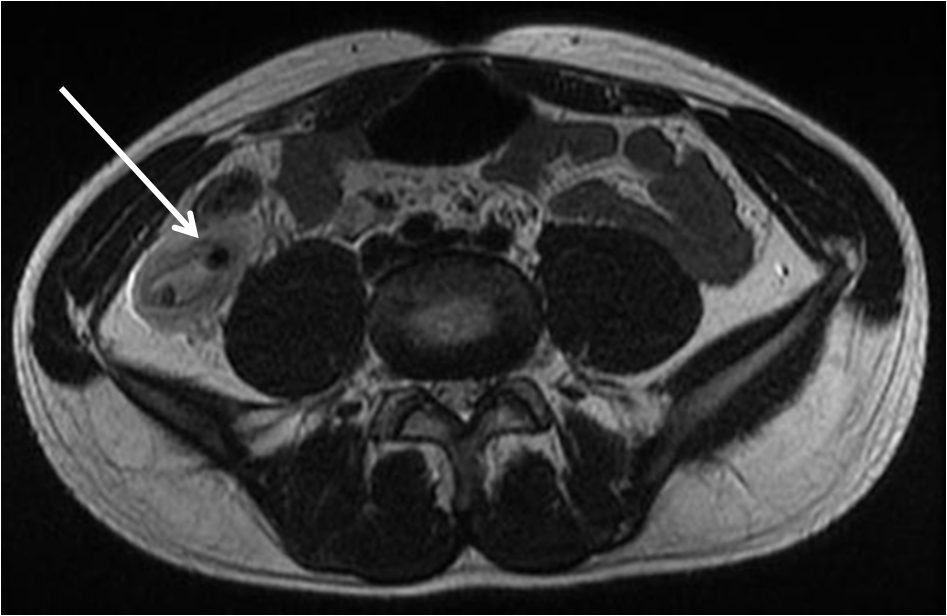Appendicular abscess MRI
|
Appendicular abscess Microchapters |
|
Diagnosis |
|
Treatment |
|
Case Studies |
|
Appendicular abscess MRI On the Web |
|
American Roentgen Ray Society Images of Appendicular abscess MRI |
|
Risk calculators and risk factors for Appendicular abscess MRI |
Editor-In-Chief: C. Michael Gibson, M.S., M.D. [1]; Associate Editor(s)-in-Chief: Aditya Ganti M.B.B.S. [2]
Overview
Magnetic resonance imaging (MRI) has become the common technique for diagnosing appendicitis in children and pregnant patients.
MRI
MRI usage has become investigation of choice in the diagnosis of appendicular abscess for children and pregnant patients because of [1]
- Low risk of radiation in children and developing fetus.
- The enlarged uterus displaces the appendix during the second and third trimesters of pregnancy, making it difficult to find by ultrasound. An MRI is therefore preferred.
On an MRI, a periappendiceal stranding appears as an increased fluid signal on the T2 weighted sequence (while it is reflected by fat stranding on a CT scan).[1]

References
- ↑ 1.0 1.1 1.2 Image courtesy of Radiologypics. Radiologypics